
The unification of Italy, also known as the Risorgimento, was the 19th-century political and social movement that resulted in 1861 in the consolidation of various states of the Italian Peninsula and its outlying isles into a single state, the Kingdom of Italy. Inspired by the rebellions in the 1820s and 1830s against the outcome of the Congress of Vienna, the unification process was precipitated by the Revolutions of 1848, and reached completion in 1871 after the capture of Rome and its designation as the capital of the Kingdom of Italy.

The 1848 Revolutions in the Italian states, part of the wider Revolutions of 1848 in Europe, were organized revolts in the states of the Italian peninsula and Sicily, led by intellectuals and agitators who desired a liberal government. As Italian nationalists they sought to eliminate reactionary Austrian control. During this time, Italy was not a unified country, and was divided into many states, which, in Northern Italy, were ruled directly or indirectly by the Austrian Empire. A desire to be independent from foreign rule, and the conservative leadership of the Austrians, led Italian revolutionaries to stage revolution in order to drive out the Austrians. The revolution was led by the state of the Kingdom of Sardinia. Some uprisings in the Kingdom of Lombardy–Venetia, particularly in Milan, forced the Austrian General Radetzky to retreat to the Quadrilateral fortresses.

The Redshirts, also called the Red coats, are volunteers who followed the Italian patriot Giuseppe Garibaldi during his campaigns. The name derived from the colour of their shirts or loose-fitting blouses that the volunteers, usually called Garibaldini, wore in lieu of a uniform.
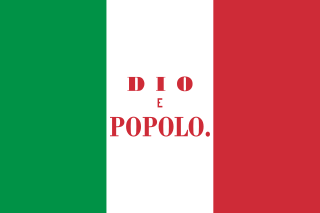
The Roman Republic was a short-lived state declared on 9 February 1849, when the government of the Papal States was temporarily replaced by a republican government due to Pope Pius IX's departure to Gaeta. The republic was led by Carlo Armellini, Giuseppe Mazzini, and Aurelio Saffi. Together they formed a triumvirate, a reflection of a form of government during the first century BC crisis of the Roman Republic.

The Ragamuffin War or Ragamuffin Revolution was a Republican uprising that began in southern Brazil, in the province of Rio Grande do Sul in 1835. The rebels were led by generals Bento Gonçalves da Silva and Antônio de Sousa Neto with the support of the Italian fighter Giuseppe Garibaldi. The war ended with an agreement between the two sides known as Green Poncho Treaty in 1845.

The Expedition of the Thousand was an event of the unification of Italy that took place in 1860. A corps of volunteers led by Giuseppe Garibaldi sailed from Quarto dei Mille near Genoa and landed in Marsala, Sicily, in order to conquer the Kingdom of the Two Sicilies, ruled by the Spanish House of Bourbon-Two Sicilies. The name of the expedition derives from the initial number of participants, which was around 1,000 people.
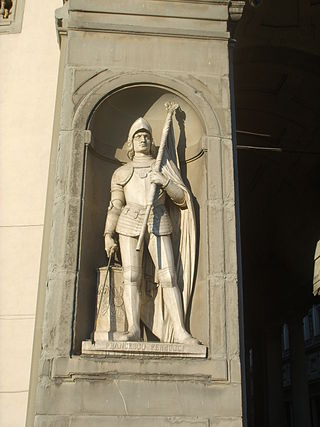
Francesco Ferruccio was an Italian captain from Florence who fought in the Italian Wars.

Anita Garibaldi was a Brazilian republican revolutionary. She was the wife and comrade-in-arms of Italian revolutionary Giuseppe Garibaldi. Their partnership epitomized the spirit of the 19th century's Age of Romanticism and revolutionary liberalism.

Giacomo Medici, Marchese del Vascello was an Italian nobleman, patriot and soldier.

The Uruguayan Civil War, also known in Spanish as the Guerra Grande, was a series of armed conflicts between the leaders of Uruguayan independence. While officially the war lasted from 1839 until 1851, it was a part of armed conflicts that started in 1832 and continued until the final military defeat of the Blancos faction in 1904.
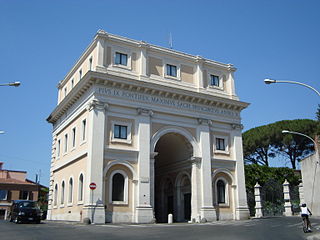
Porta San Pancrazio is one of the southern gates of the Aurelian walls in Rome, Italy.

In the Age of Revolution, the Lazzaroni of Naples were the poorest of the lower class in the city and Kingdom of Naples. Described as "street people under a chief", they were often depicted as "beggars"—which some actually were, while others subsisted partly by service as messengers, porters, etc. No precise census of them was ever conducted, but contemporaries estimated their total number at around 50,000, and they had a significant role in the social and political life of the city. They were prone to act collectively as crowds and mobs and follow the lead of demagogues, often proving formidable in periods of civil unrest and revolution.

Giuditta Tavani Arquati was an Italian republican patriot, a notable figure in the Italian Risorgimento and a martyr for the cause of a United Italy.
Francesco Arquati was an Italian republican patriot, a notable figure in the Italian Risorgimento and a so-called martyr for the cause of a United Italy.

Giuseppe Maria Garibaldi was an Italian general, patriot, revolutionary and republican. He contributed to Italian unification and the creation of the Kingdom of Italy. He is considered to be one of Italy's "fathers of the fatherland", along with Camillo Benso, Count of Cavour, Victor Emmanuel II of Italy and Giuseppe Mazzini. Garibaldi is also known as the "Hero of the Two Worlds" because of his military enterprises in South America and Europe.
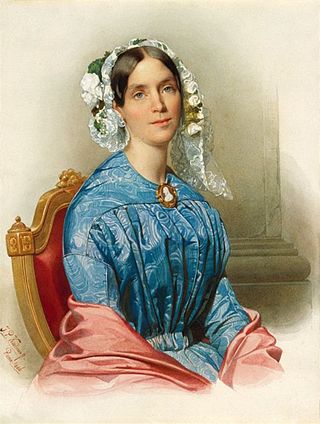
Jan (Johan) Philip Koelman was a Dutch painter, sculptor, writer and teacher, involved during part of his life in revolutionary activity.

The Equestrian statue of Bartolomeo Colleoni is a Renaissance sculpture in Campo Santi Giovanni e Paolo, Venice, Italy, created by Andrea del Verrocchio in 1480–1488. Portraying the condottiero Bartolomeo Colleoni, it has a height of 395 cm excluding the pedestal. It is the second major equestrian statue of the Italian Renaissance, after Donatello's equestrian statue of Gattamelata (1453).
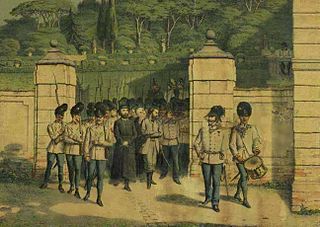
Giovanni Livraghi was an Italian patriot, who took part in various enterprises of Giuseppe Garibaldi, being part of the Italian legion which he founded in Montevideo in 1843 and participating, as a result, in the defense of the Roman Republic.
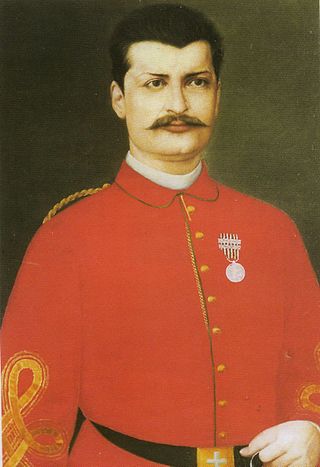
Achille Cantoni was an Italian war volunteer who fought in the Second and Third Italian Wars of Independence. He is credited with saving the life of Giuseppe Garibaldi, an Italian general and central figure of the Risorgimento, during a battle in the town of Velletri in 1849. He died at the Battle of Mentana on November 3, 1867. After his death, Giuseppe Garibaldi wrote a novel entitled Cantoni il volontario in his honor.
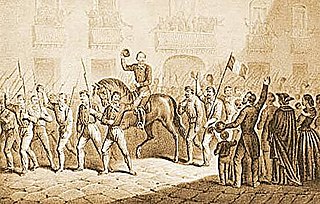
The Southern Army was the force of around 50,000 Italian and foreign volunteers which formed as a result of the Expedition of the Thousand. The name was coined by Giuseppe Garibaldi.



















